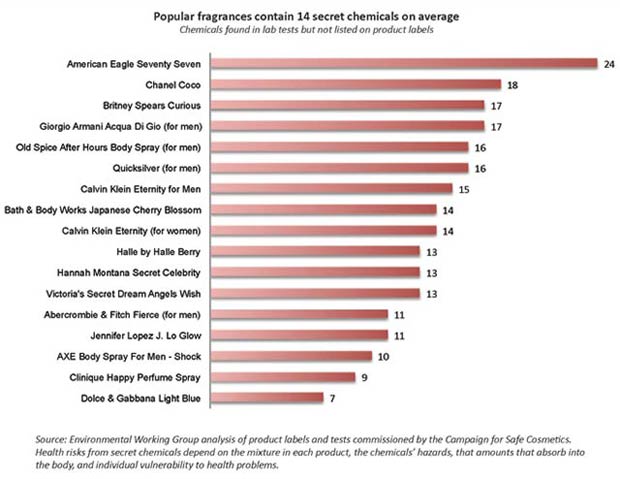Notes, anchors, and everything else you need to know about fragrances before you visit the perfumery
Perfume oils, once a revered symbol of affluence and sophistication affordable to only the wealthiest of high society, seem to be growing more affordable and readily available every day. It would appear that modern chemists’ ability to replicate almost every scent in nature, as well as a few unnatural scents, cheaply and in large quantities via synthetic ingredients has done much to level the playing field. But has the substitution of chemicals and fillers for nature-made essential oils really done the world any favors?
If you asked Jennifer, a self-proclaimed perfume addict who, on impulse, bought a new celebrity-endorsed fragrance she saw advertised on TV and later spent her anniversary dinner feeling nauseous from the after-effects of its chemical formulation once the initial scent wore off, the answer would be a resounding, “No.”
You see, in her haste to acquire the advertised perfume, Jennifer neglected to check its ingredients or try a sample to check for allergic reactions before buying it, and ended up purchasing only toilet water.
Not literally, of course. Those familiar with perfume classifications may know it better by its native French term eau de toilette, one of the lower-grade classifications where a fragrance’s fragrance oil or essential oil content is only around four to eight percent. Other classifications include:
- Eau de Cologne – FO/EO content: 3-5%
- Eau de Parfum – FO/EO content: 8-15%
- Parfum de Toilette – FO/EO content 15-30%
- Parfum, or Extrait – FO/EO content: 30% or greater
The higher a fragrance’s oil content, the longer lasting the aroma will be when applied to the skin. Whether a fragrance adhering to your body for hours is in fact desirable or not depends largely on whether the fragrance is made from synthetic fragrance oils or natural essential oils. In 2010, the Environmental Working Group (EWG) conducted an investigative study on perfume and cologne ingredients and discovered, to the shock of the nation, that the popular fragrance Pure Poison was, in fact, poison. Headaches and nausea are common allergic reactions to synthetic fragrance oils and chemical fillers. Many chemicals used to create synthetic fragrances are also known carcinogens and/or neurotoxins, and are not required by U.S. regulations to be disclosed as anything other than the umbrella term “fragrance.”
Fragrances made with essential oils rather than synthetic fragrance chemicals are far less likely to cause any sort of allergic reaction, and far more research is available on them to reassure people that they are not carcinogens or neurotoxins. Essential oils also have standards of purity, which can affect a perfume’s quality and price. For example, the essential oil of lavender that is made from the wild-grown lavender plants on the mountaintops of France via the time-honored process of steam distillation would be rated as one of the highest grades of lavender available, and the ideal choice for people such as aromatherapists who are interested in the oil for its therapeutic properties.
Of course, a perfume made with a generous percentage of the highest quality essential oils on the market will likely come with an equally high price tag, which is why perfumes advertised at a price that sounds too good to be true are usually the lower fragrance classifications or perhaps once were high quality but are now at the end of their shelf life.
Perfume Notes and Anchors
Another consideration you should take into account before purchasing perfume is the breakdown a scent’s notes and anchors. High quality scents should be composed of at least three different essential oils, often referred to as “notes” in the perfume industry.
The top note is the first note you will notice upon spraying the perfume, and you likely won’t notice it for more than a second or two, nor will it stay with you throughout the day. It’s just the initial scent that makes up the perfume’s blend.
The middle note lasts longer than the top note, and the bottom note is the longest lasting. The bottom note is also what anchors the top note to the middle note to create an original, proprietary fragrance blend that is distinct from its component parts (kind of like a melting pot.) A well selected anchor will actually change how you perceive the other two notes blended together. Sandalwood is the bottom and anchor scent used in Tre’Yours Answered Prayer Perfume Oil, and Patchouli is the bottom and anchor for After the Storm, another popular fragrance by Tre’Yours. Both are made exclusively with essential oils, meaning they are 100% pure and contain no alcohols, synthetic ingredients, or fillers.
At Castle Baths, we consider the crafting of the perfect scent to be no less an art form than mixing the perfect color palette from which to paint a canvas. The careful selection and precise blending of quality essential oils takes dedication, talent, and creativity to ensure that the resulting natural perfume oil is indeed a masterpiece.




















